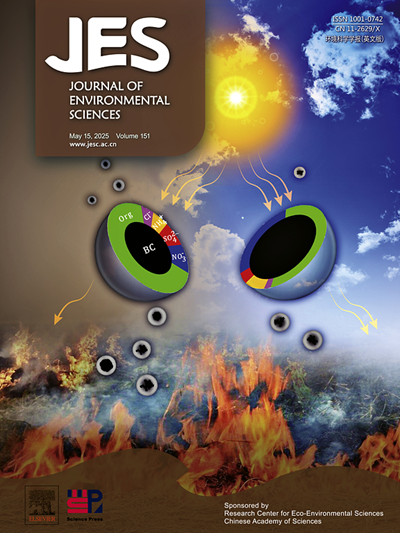Simultaneous determination of peroxydisulfate and bisulfite concentrations with quenching-agent-assisted iodometry
IF 5.9
2区 环境科学与生态学
Q1 ENVIRONMENTAL SCIENCES
引用次数: 0
Abstract
Fenton/Fenton-like reactions have gained popularity for their remarkable proficiency in decomposing organic pollutants, especially when enhanced by reductants addition for accelerating the Fe2+ regeneration. Nevertheless, these works predominantly centered on the formation and utilization of hydroxyl radicals (•OH) in the process, neglecting the evolution of oxidant and reductant due to the difficulty in the simultaneous determination of these two components. By employing the quenching-iodometric method, we could simultaneously determine the concentrations of HSO3- and peroxydisulfate (PDS). This method first employed an excess of peroxymonosulfate (PMS) to effectively quench HSO3-, and then used the iodometric spectrophotometry to simultaneously determine the concentrations of PMS and PDS in the reaction system. Finally, through precise stoichiometric relationships, we could accurately calculate the concentration of HSO3-. Based on this method, we achieved concentration measurements that, upon linear fitting, yielded a correlation coefficient (R2) surpassing 0.99, unequivocally affirming the method's accuracy and trustworthiness. In this work, an innovation approach for determining the concentrations of HSO3- (reductant) and PDS(oxidant) was explored.
Additionally, the resilience of the method was verified across different pH levels and in the presence of diverse impurity ions. The results ensured precise concentration measurements in the real wastewater. This method was characterized by its simplicity, rapid analysis, and environmental friendliness, offering a new analytical strategy for the determination of PDS and HSO3- in environmental samples. The method enables more meticulous monitoring of chemical usage in water treatment, facilitating optimized dosing strategies and assessments of reductant-enhanced Fenton or Fenton-like system in water purification.
求助全文
约1分钟内获得全文
求助全文
来源期刊

Journal of Environmental Sciences-china
环境科学-环境科学
CiteScore
13.70
自引率
0.00%
发文量
6354
审稿时长
2.6 months
期刊介绍:
The Journal of Environmental Sciences is an international journal started in 1989. The journal is devoted to publish original, peer-reviewed research papers on main aspects of environmental sciences, such as environmental chemistry, environmental biology, ecology, geosciences and environmental physics. Appropriate subjects include basic and applied research on atmospheric, terrestrial and aquatic environments, pollution control and abatement technology, conservation of natural resources, environmental health and toxicology. Announcements of international environmental science meetings and other recent information are also included.
 求助内容:
求助内容: 应助结果提醒方式:
应助结果提醒方式:


